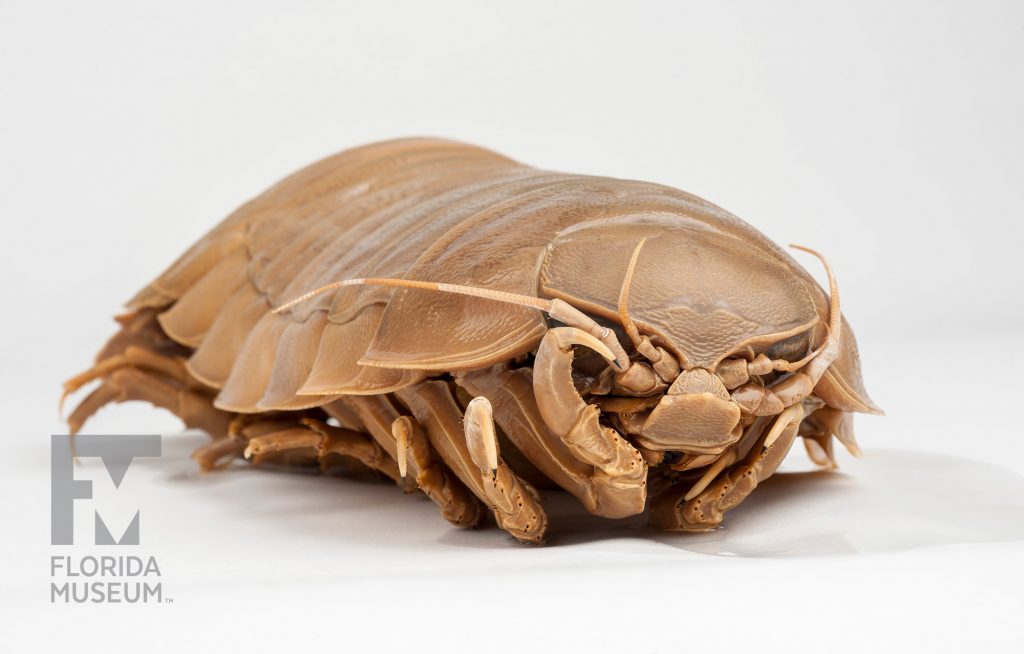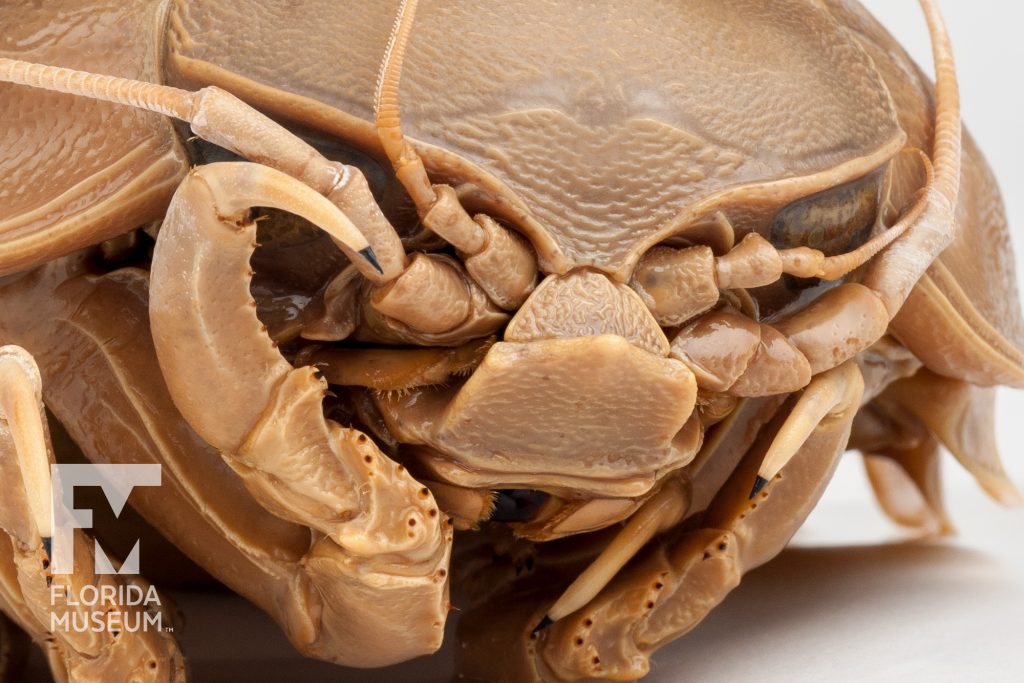The World’s Largest Pill Bug, a crustacean distantly related to shrimp and crabs, lives in deep waters around the world, including off Florida’s Gulf Coast. Some cultures adore this crustacean and honor it with cell phone cases and stuffed animals.
Summary
World’s Largest Pill Bug (Bathynomus giganteus)
From Gulf of Mexico, Aug. 1987
Collection
Story
Many people are familiar with Pill Bugs, also known as Rolly-Pollies. This little beauty here, whose scientific name is Bathynomus giganteus, is the largest Pill Bug in the world and he can be found right here in the deep waters off the Florida coast.
Despite the familiar body plan, I’ve often heard people say that this animal looks like an alien, and people have even gone so far as to say that he looks creepy, but Bathynomus is not without his share of adoring fans. If you find yourself drawn to this charismatic crustacean, you might consider showing your devotion by acquiring some of the Bathynomus-themed swag that is available for people like us, including stuffed animals, phone cases, tea strainers and even a CD.
Mandy Bemis
Assistant Collection Manager, Invertebrate Zoology*
Florida Museum of Natural History
Exhibit
On display Sept. 23, 2017-Jan. 7, 2018, Rare, Beautiful & Fascinating: 100 Years @FloridaMuseum celebrated the Museum’s rich history. Each Museum collection was asked to contribute its most interesting items and share the stories that make them special. Though the physical exhibit is closed, this companion website remains online, providing an opportunity to experience the Florida Museum’s most treasured specimens.
Exhibit Area: Objects Tell Stories
Theme: Surprising Biodiversity
 Want to see more? Explore more than 300 breathtaking color photos of plants, animals, fossils and cultural heritage materials from the Florida Museum of Natural History’s collections in the award-winning book All Things Beautiful available from the University Press of Florida.
Want to see more? Explore more than 300 breathtaking color photos of plants, animals, fossils and cultural heritage materials from the Florida Museum of Natural History’s collections in the award-winning book All Things Beautiful available from the University Press of Florida.
*This title was accurate at the time the exhibit was on display in 2017. Please visit the collection website to verify current staff and student information.

